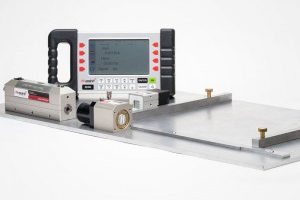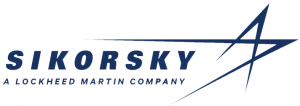This Month’s Featured Solution: Roll Alignment
The sound of management pulling the plug on a roll, web or converting line has flooded many a vein with ice water. Very little good news comes from machine downtime. However, issues with conveyor belt systems are too costly to ignore. Often, a roll assembly is out of alignment causing defective product. Torn and wrinkled material, smeared ink, damaged features and uneven coatings are all reasons to stop roll lines. These are also indications that there is an alignment issue. When production shuts down, time and money start to drain so let’s get an understanding of what is happening with roll misalignment.
Symptoms of a misaligned machine:
- Machine is noisy and starts humming and vibrating
- Coatings, bonded layers or ink are uneven
- Advanced wear and tear (especially after servicing) requiring more parts to keep the continuous processing line running
- Computer cannot register physical machine – bearings, drives and components wear and break frequently
- Damaged [wrinkled, torn, uneven] product
These are common indications of roll misalignment
Many manufacturing facilities operate equipment that contains rollers, idlers, press drums, and web handling systems. The alignment of roll and web systems is important to the efficient operation of these production lines in order to improve productivity and reduce production downtime. Verifying roll and web alignment and position is a typical application within a multitude of industries, which is great news for the professionals involved in the verification process and those funding the operation. There is also a wealth of information on how to do this well and some high quality tools to assist in the roll alignment process.
∞ See how rolls are aligned and view this tutorial on measuring roll leveling and profiling.
How web and roll position is aligned throughout industry involves understanding the makeup of the assemblies. The product or material being manufactured passes over several rollers as it continues through the specific manufacturing process. A thin sheet of film, plastic or paper operation could be combined with a bonding agent or a substrate of foil, liquid laminate or malleable plastic. This combination would then be treated, coated and passed through the production line. If the feeder unit delivering the rolled material or the transfer rollers for nipping, coating or other processes are not properly aligned, the product being manufactured will develop tracking problems the result in the material wandering. When wandering off the machine starts, the material is often unusable and the process correction work has to start. If the roll machine requires downtime, your team has wasted material and lost time.
If roll misalignment does not cause problems with materials tracking, it will very likely stretch the product unevenly. Imagine you are traveling through the roll process and can take one of three paths through the machine: one on the left edge, one in the center, and one on the right edge. If the web or the rollers are not all parallel, the length of these three paths will be uneven. Material moving together as one sheet, might follow a shorter path on the left edge and experience wrinkling or bunching. At the same time, material on the right edge must follow a longer path and will experience stretching or possible damage. When the material finally comes off the end of the machine, the stretched areas and the wrinkled areas will contribute to poor product quality and perhaps failure.
Continuous lines that pass plastic wrap and foil products for food require even dough for ravioli to prevent breakage and product inconsistency. Plastic wrap is pliable enough that it will give if there is some stretch but too much and the entire run of plastic is ruined. Pressed metal, metallic substrates, high strength composite films and other structural materials are less compliant. Thus, making machine component alignment critical. Stretch, tear or wrinkle these materials and the integrity of the dimensions is lost. If there is a perfect way to prevent this from happening, it is using a laser alignment system that captures precision measurements.
 The Microgage Roll Alignment Systems are intuitive and reliable alignment tools engineered specifically to measure roll alignment. In addition, the custom-built alignment accessories allow for better precision measurements at infinitesimal increments while the alignment software Capture™ provides your team with post alignment options. If your project focus is faster throughput, that doesn’t sacrifice quality, that can be just as critical as preventing machine downtime so all alignment kits are structured to be highly versatile, no matter what your needs are.
The Microgage Roll Alignment Systems are intuitive and reliable alignment tools engineered specifically to measure roll alignment. In addition, the custom-built alignment accessories allow for better precision measurements at infinitesimal increments while the alignment software Capture™ provides your team with post alignment options. If your project focus is faster throughput, that doesn’t sacrifice quality, that can be just as critical as preventing machine downtime so all alignment kits are structured to be highly versatile, no matter what your needs are.
For more information on checking the parallelism of rolls and web systems, download the whitepaper. Machine and machine component alignment become no-brainers when you take advantage of Pinpoint’s many resources, applications on measuring parallel and laser alignment tools.


































